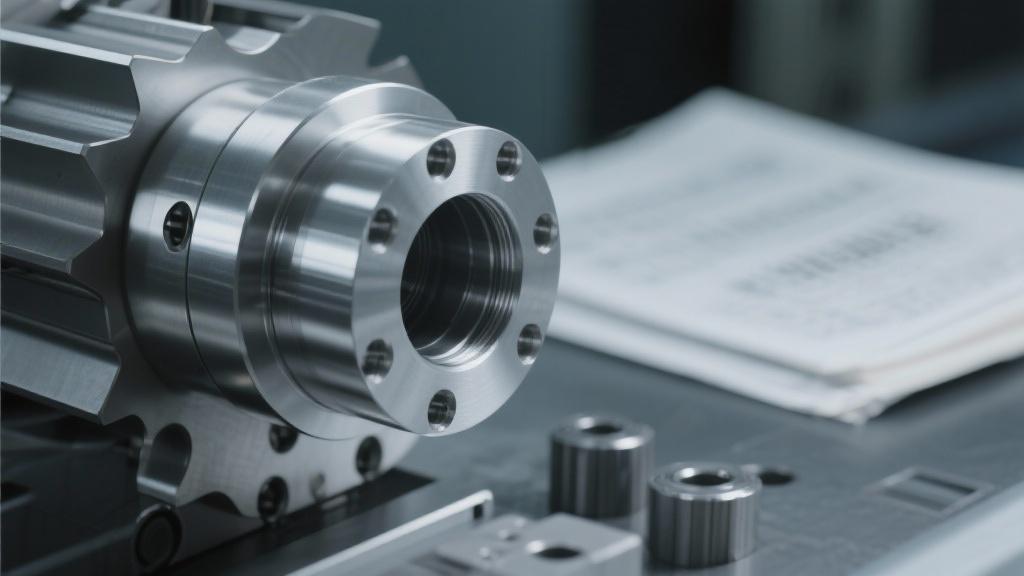Aluminum, known for its lightweight yet strong characteristics, is a popular choice in various applications, from aerospace to automotive. However, the evaluation process is not just a formality; it is essential for ensuring safety, performance, and durability. By examining the factors that can affect structural integrity—such as machining processes, material properties, and environmental conditions—we provide insights into how manufacturers can optimize quality control.
Additionally, the article highlights key challenges faced during assessments and the latest advancements in technology that enhance evaluation accuracy. Whether you’re a manufacturer, engineer, or simply interested in the field, understanding these assessment techniques is crucial for appreciating the complexities of aluminum machining. Join us as we uncover the essential practices that contribute to the effectiveness and safety of aluminum machined parts in today’s competitive market.
## Question: Is the integrity of aluminum machined parts effectively assessed?
Answer:
When it comes to aluminum machined parts, ensuring their integrity is crucial for performance, safety, and reliability. So, how do we go about assessing that integrity? This piece delves into the various methods and techniques used to effectively evaluate these components, shedding light on the often complex processes manufacturers implement.
One of the primary methods for assessing structural integrity involves non-destructive testing (NDT). This technique allows engineers to detect flaws without damaging the part itself. Common NDT methods include ultrasonic testing, magnetic particle inspection, and dye penetrant testing. Each serves a unique purpose, whether it’s finding microscopic cracks, assessing welds, or examining surface finishes. For instance, ultrasonic testing sends sound waves through the material; any echoes received can indicate inconsistencies.
Another key approach is mechanical testing, which looks at how the parts behave under stress. Tests like tensile testing, where a sample is pulled until it breaks, help in understanding the materials’ yield strength, ductility, and other vital properties. This data is associated with quality specifications and industry standards, ensuring parts can handle the requirements of their intended application.
Going beyond these conventional methods, the rise of digital technology brings exciting advancements. Techniques like finite element analysis (FEA) enable engineers to simulate how a part will perform under various conditions. This computational approach helps predict potential failure points before physical testing, saving time and resources. It’s becoming a game-changer, reflecting a significant leap in how we assess not just aluminum parts but many materials in engineering.
Moreover, the integrity assessment isn’t a one-time task; it’s an ongoing process. With the increasing complexity of designs and materials used, continuous monitoring and assessment have become essential. Many companies are now integrating data analytics and AI into their manufacturing processes, making real-time assessments possible. Doing so not only helps in immediate quality control but also in predictive maintenance, allowing companies to address potential issues before they escalate.
When evaluating the integrity of aluminum machined parts, it’s also essential to consider the overall manufacturing environment. Factors like temperature fluctuations, humidity, and even the machinery used can all influence the structural integrity. Therefore, effective quality assurance strategies must encompass materials sourcing, machining processes, and post-manufacturing inspections to create a comprehensive picture.
In short, the assessment of aluminum machined parts’ integrity is multi-faceted, incorporating NDT, mechanical testing, advanced digital simulations, and continuous monitoring to ensure that every component meets rigorous safety and performance standards. As technology evolves, so too do the methods for ensuring quality, pushing the boundaries of what’s possible in manufacturing.

What are the common methods used to assess aluminum machined parts?
Common methods for assessing aluminum machined parts include non-destructive testing techniques like ultrasonic testing and dye penetrant testing. These methods help identify flaws without damaging the parts.
Mechanical testing is also crucial, as it assesses how parts perform under stress. Techniques like tensile testing reveal important data about strength and ductility, ensuring that the parts meet required standards.
How does the manufacturing environment affect aluminum part integrity?
The manufacturing environment plays a vital role in the integrity of aluminum parts. Factors like temperature fluctuations and humidity can impact the material properties during machining.
When conditions are not controlled, defects can arise that compromise safety and performance. Thus, monitoring the environment is key to maintaining overall quality throughout the production process.
How do advanced technologies improve integrity assessment?
Advanced technologies like finite element analysis (FEA) and real-time data analytics are transforming how we assess aluminum parts. FEA allows simulations to predict how parts will perform under various loads, identifying potential issues before physical testing occurs.
Real-time analytics enable continuous monitoring during production, leading to quicker responses to potential defects and ultimately improving overall product integrity.
Why is continuous monitoring of aluminum machined parts important?
Continuous monitoring is crucial because it helps identify issues before they escalate, enhancing safety and reliability in applications. Manufacturing is a dynamic process, and ongoing assessments ensure that the quality of aluminum parts stays consistent.
Many manufacturers find that this proactive approach not only saves money in the long run but also boosts customer confidence in the products they offer.
What standards govern the assessment of aluminum machined parts?
Several industry standards guide the assessment of aluminum machined parts, including ISO and ASTM guidelines. These standards outline specific testing methods and criteria that parts must meet to ensure quality and safety.
By adhering to these standards, manufacturers can provide assurance that their products perform reliably in demanding environments, such as aerospace and automotive applications.



